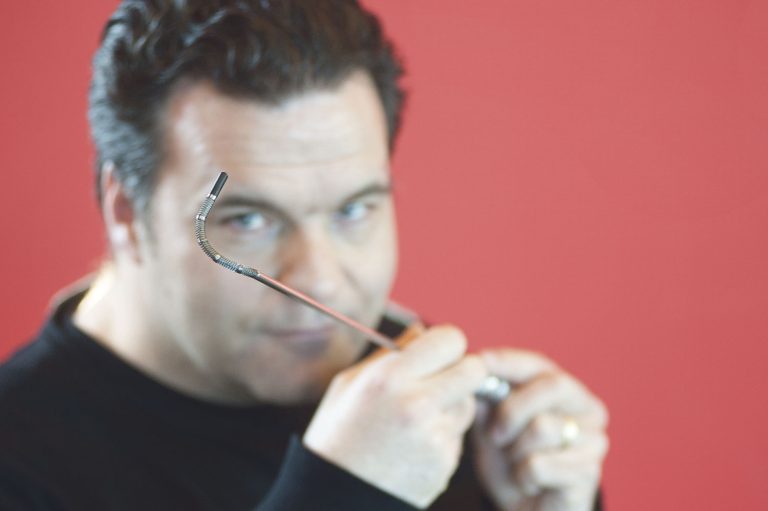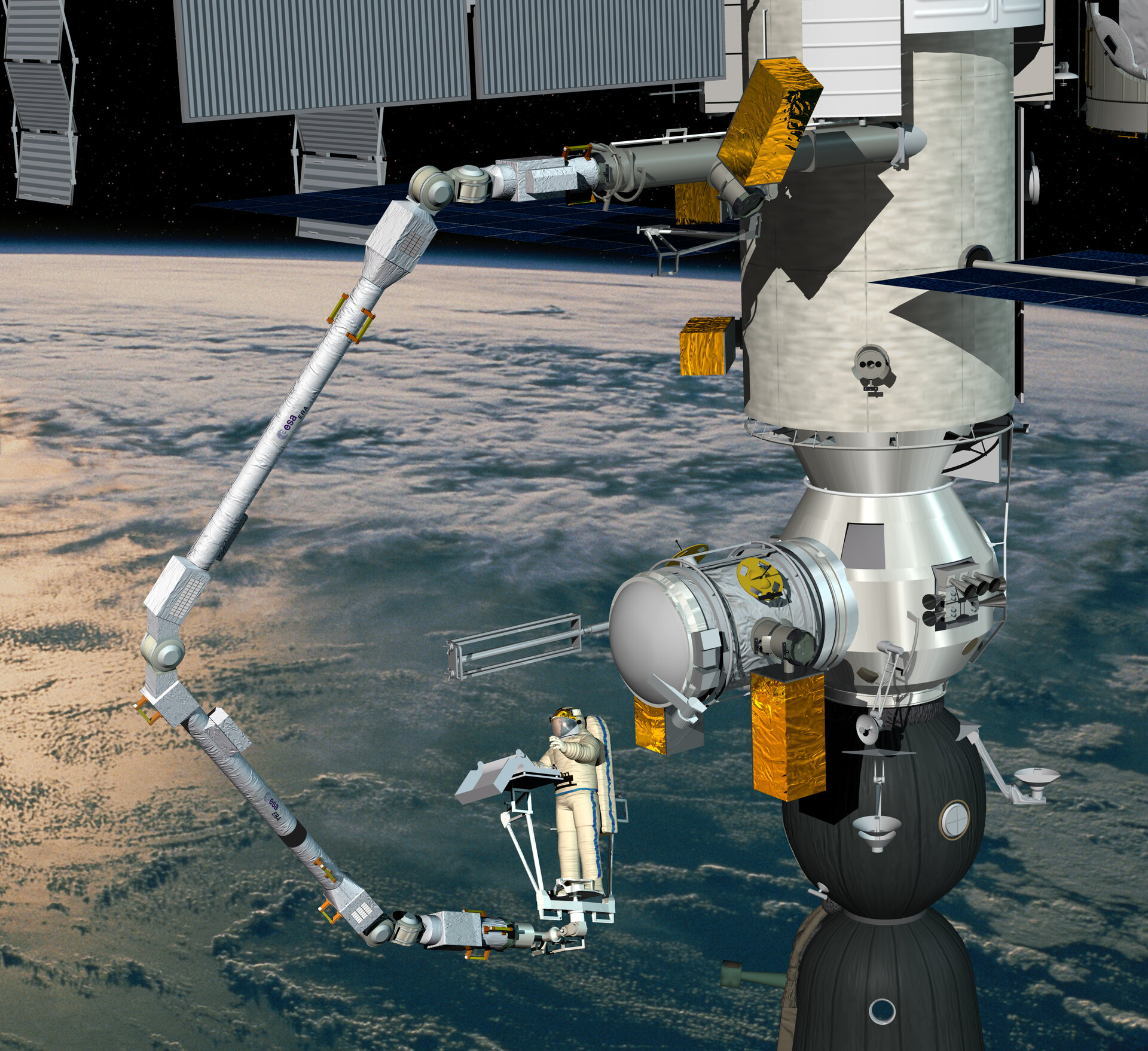The war echoes in space. ESA cannot access the European Robotic Arm as it is attached to the Russian ISS. Paul Breedveld earned his doctorate with this robotic arm in 1996.
Artist's impression of the European Robotic Arm (ERA), connected to the Russian Nauka laboratory module. (Image ESA)
It crawls over the exterior of the International Space Station (ISS) like a giant caterpillar. The 11 metre European Robotic Arm (ERA) space robot, which was largely developed in the Netherlands, can install experimental set-ups, inspect the condition of the ISS, and do countless other jobs in space.
It arrived at the ISS in the summer of 2021. But it looks like it has less going for astronauts at the European Space Agency (ESA) than expected. It is attached to the Russian side of the station. And since Putin declared war on Ukraine, things are not going that well between ESA and the Russian Roscosmos anymore.
Developing the European Robotic Arm took an incredible 35 years. ‘You will be able to write a thick book with a climactic ending about ERA should it come to nothing just before it reaches the finishing line’, the de Volkskrant newspaper quoted the astronaut André Kuipers as saying earlier this month.
 Among Breedveld’s creations are surgical instruments that wrap themselves around organs like snakes and then split up so that they change into octopus-like instruments deep in the body. (Photo: Tomas van Dijk)
Among Breedveld’s creations are surgical instruments that wrap themselves around organs like snakes and then split up so that they change into octopus-like instruments deep in the body. (Photo: Tomas van Dijk)If that book is ever written, one chapter should be dedicated to the research of Paul Breedveld. The Professor of Biomedical Enigineering at the Faculty of Mechanical, Maritime and Materials Engineering has been in the limelight for years with his flexible surgical instruments for minimally invasive surgery. But his graduation research and his doctoral research in the 1990s had nothing to do with the medical sciences. At the time, Breedveld worked on human-machine interfaces for the robot arm.
Does it feel a bit like your outcast child that is attached to the ISS and floating around in space?
He laughs. “No, not really. I did not make the robot. I only worked on the human-machine interfaces that made the arm easy to control for astronauts. It does feel strange to talk about it 25 years later though. It is a strange story. When I earned my doctorate, the arm was in a big hall at Fokker Space & Systems in Leiden. It was almost ready to be launched but that only happened in 2021. In the intervening period they used it in a lot of simulations so when the robot was finally launched last year, I followed it with much interest. It is a pity that the arm is apparently not doing the job for which it was made.”
What was your dissertation about?
“My project was about the fact that the arm had to be controlled using camera images. While these are flat images, the arm needed to be positioned in space to grab and move things. At the time, the plan was also to control the robot arm from earth. Given the great distance, you also had to deal with a couple of seconds delay. I graduated, and later earned my PhD, on a technique that extracts spatial information from flat camera images and that compensates for the time delay. The information is then displayed in graphics to the astronaut who controls the arm. It was very interesting research and I got through it well. I developed one of the first real spatial graphic displays in the world. It allowed us to control the arm a lot better – and with fewer collisions – than was possible with the displays at the time.”
How did you approach the subject?
“I wanted to animate part of the space station. It had to look very realistic. In that digital world you had to be able to control the robot in real time using a special joystick called a spaceball controller. That was quite tricky at the time. Computer graphics were still in their infancy. I worked with an advanced computer made by the Silicon Graphics company. It does not exist anymore, but at the time their computers had the most advanced graphics in the world. The company animated an impressive scene in the first Jurassic Park film, the famous scene in which hordes of ostrich-like dinosaurs run through a field.
“I bought a graphic computer like that for my research. It was horribly expensive – almost all my doctoral research budget went on it. I had to make sure that it worked properly straightaway. I was ultimately able to simulate and animate the entire dynamics of the robot with its flexible arms, with 23 degrees of freedom, all the relevant regulations, including an accurate friction model and a spatial graphic display showing the robot and the space station. And all that in real time.”
Is that control system used by ESA?
“No, I don’t think so.”
Is that not a bitter pill to swallow?
“It’s all right. I was able to use the knowledge that I acquired later on in my work in the medical world.”
Why did you say farewell to the space sector?
“In 1997 I was offered the opportunity to work on medical technical research. The problem definitions are similar. If you insert an endoscope into a stomach, you also need to be able to manoeuvre it using camera images. You have similar depth observation issues and eye-hand coordination issues. So really it’s exactly the same except that it does not play out far away in the external world of the cosmos, but in the internal world of the patient. I found that appealing. The space industry was too conservative for me, and this is exemplified by the fact that the robot arm was only launched after 25 years. Every country has to have its say and have a share in the research. This makes many space projects inefficient.
“Having said that, there are, of course, many interesting facets to the robot. For instance, apart from the control aspect, the joints need to be oiled. The cogs cannot be oiled with standard oil as oil immediately evaporates in a vacuum. They had to come up with something for this. It certainly is something special.”
Do you have a question or comment about this article?
tomas.vandijk@tudelft.nl


Comments are closed.